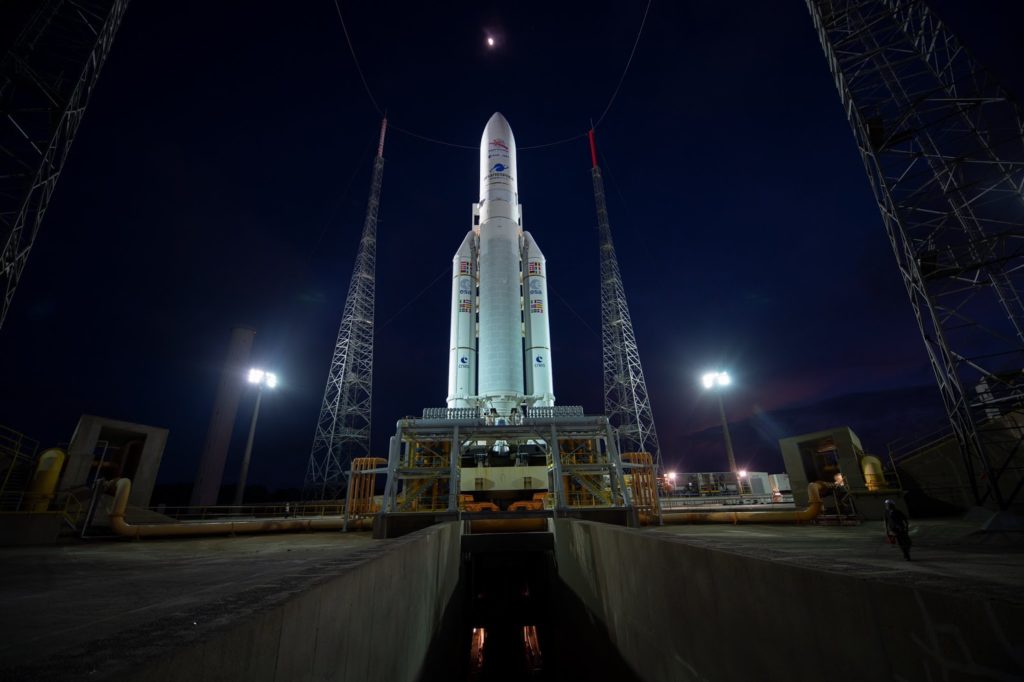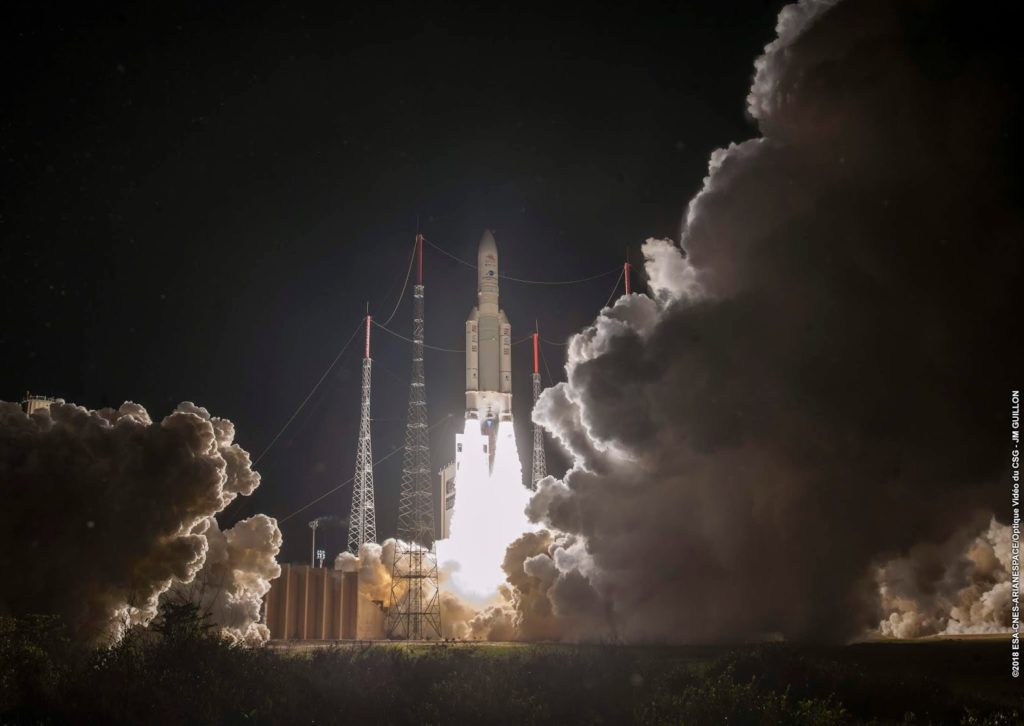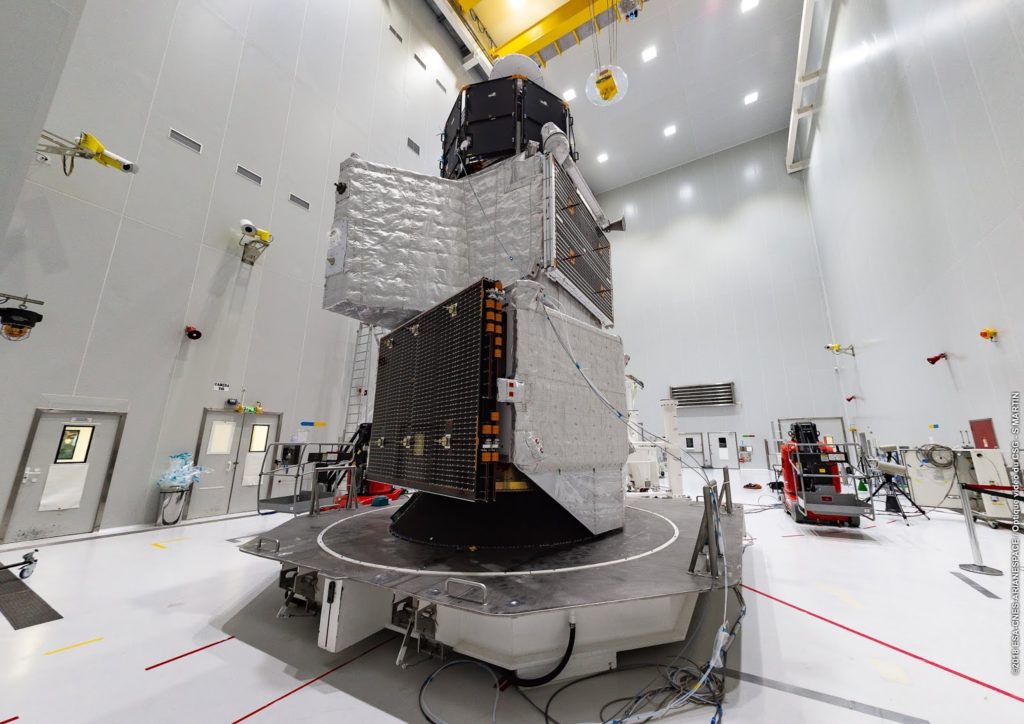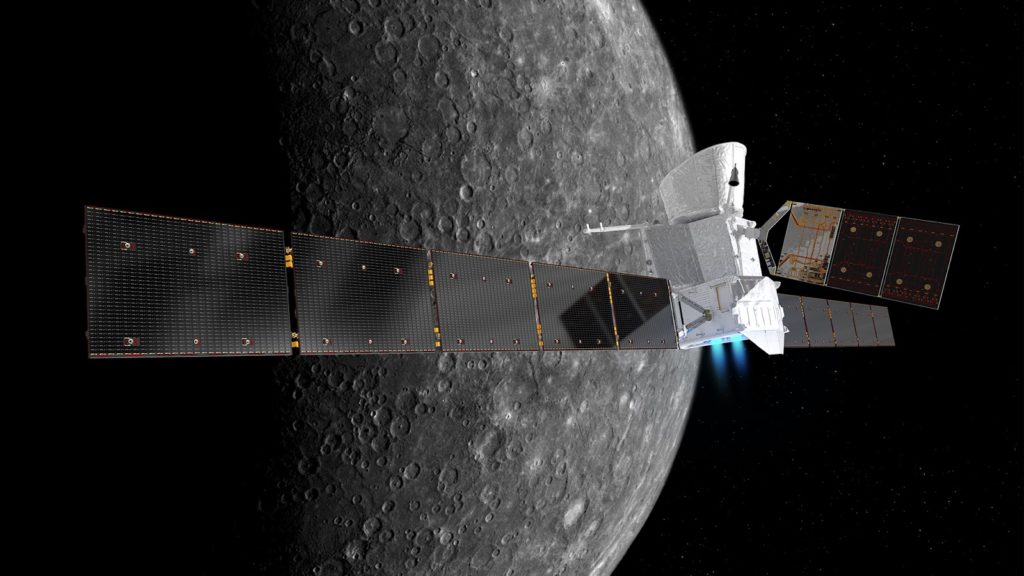the European and Japanese space agencies, the stacked duo of orbiters known
collectively as BepiColombo blasted off late Friday atop a powerful Ariane 5
rocket from Europe’s spaceport in French Guiana to propel the long awaited
mission on a circuitous 7 year trek involving 7 planetary flybys to reach
mysterious Mercury – the innermost planet of our solar system.
Mercury lifted on Europe’s premier and most powerful rocket the Ariane 5 from Kourou, French
Guiana at 9:45 p.m. EDT, Friday, 19 October 2018, 10:45 p.m. local time (01:45:28 GMT 20
October 2018).
launch of the 101st Ariane 5 was spectacular and webcast live by ESA
and Arianespace. It soared eastwards over the south Atlantic Ocean towards
Africa and lit up the nighttime sky across the Kourou region.
European Space Agency (ESA) and the Japan Aerospace Exploration Agency (JAXA)
and marks one of the most technically challenging missions attempted by both
agency’s.
“It was
fantastic!” said Johannes Benkhoff, the BepiColombo project scientist during
the webcast while experiencing his first launch. “I’ve never seen that before,
and it was great. It was like a big fireball going through the sky, it was
really nice.”
“Signals from the spacecraft, received at
ESA’s control centre in Darmstadt, Germany, via the New Norcia [Australia] ground tracking
station at 02:21 GMT confirmed that the launch was successful,” ESA announced
during the webcast.
The spacecraft separated as planned from the
upper stage about 27 minutes after liftoff to begin the 7 year voyage to reach
Mercury in December 2025, as reported live on the webcast.
The antennas and trio of life giving solar
arrays were also deployed as planned.
“Launching BepiColombo is a huge milestone for
ESA and JAXA, and there will be many great successes to come,” says Jan Wörner,
ESA Director General.
“Beyond completing the challenging journey,
this mission will return a huge bounty of science. It is thanks to the
international collaboration and the decades of efforts and expertise of
everyone involved in the design and building of this incredible machine, that
we are now on our way to investigating planet Mercury’s mysteries.”
the second mission to orbit Mercury, following up on NASA’s MESSENGER mission
which explored the hellishly hot planet for four years from 2011 to 2015. However
there are stlll many unanswered question like what is the composition of the material
in the permanently shadowed polar craters- water ice and what else?
It also counts as Europe’s first mission to
Mercury and the world’s first mission to send two spacecraft at once to the
tiniest of the terrestrial planets. They
must endure and survive extreme temperatures ranging from -180ºC to over 450ºC
– hotter than a pizza oven!
“Many of the spacecraft mechanisms and outer
coatings had not previously been tested in such conditions.”
The mission comprises a pair of orbiters- one
contributed by each space agency that orbit Mercury from two different orbits
and with two different sets of science instruments that will provide
“complementary measurements of the planet and its
dynamic environment at the same time.
BepiColombo comprises 4 elements – two science
orbiters: ESA’s Mercury Planetary Orbiter (MPO) and JAXA’s Mercury
Magnetospheric Orbiter (MMO, or ‘Mio’) – stacked on top of one another, as well
as a sunshade and the Mercury Transfer Module (MTM).
The ESA-built Mercury Transfer Module (MTM)
will carry the orbiters to Mercury using a combination of solar electric
propulsion and gravity assist flybys.
MPO is equipped with 11 science instruments. MMO
carries five science instruments.
They will fly in different polar elliptical orbits.
“A unique aspect of this mission is having two
spacecraft monitoring the planet from two different locations at the same time:
this is really key to understanding processes linked to the impact of the solar
wind on Mercury’s surface and its magnetic environment,” says ESA’s BepiColombo
project scientist Johannes Benkhoff.
April 2020, followed by two at Venus, and six at Mercury, before entering orbit
at Mercury in late 2025.
Along the way during the cruise phase, several
of the science instruments will be activated to gather measurements.
The flyby’s are essential to slowing down the
spacecraft sufficiently to slip into orbit and be captured by the gravitational
pull of Mercury.
“One of the
biggest challenges is the Sun’s enormous gravity, which makes it difficult to
place a spacecraft into a stable orbit around Mercury. We have to constantly
brake to ensure a controlled fall towards the Sun, with the ion thrusters
providing the low thrust needed over long durations of the cruise phase,” says
Andrea Accomazzo, ESA Flight Director for BepiColombo.
“There
is a long and exciting road ahead of us before BepiColombo starts collecting
data for the science community,” says Günther Hasinger, ESA Director of
Science.
“Endeavours like the Rosetta mission and their
ground-breaking discoveries even years after their completion have already
shown us that complex science exploration missions are well worth the wait.”
 |
|
BepiColombo Science
themes at Mercury. Credit: ESA |
Here are the science objectives of BepiColombo
covering all aspects of the planet and its environment. The origin and
evolution of a planet close to its parent star
could be extended another year with sufficient fuel reserves.
 |
|
ESA-JAXA
BepiColombo mission to Mercury poised for lift off on ESA Ariane 5 from Europe’s Spaceport in Kourou on 19 Oct 2018. Credit: ESA |
Watch for Ken’s
continuing onsite coverage of NASA, SpaceX, ULA, Boeing, Lockheed Martin,
Orbital ATK and more space and mission reports direct from the Kennedy Space
Center, Cape Canaveral Air Force Station, Florida and Wallops Flight Facility,
Virginia.
Stay tuned here for Ken’s continuing Earth and Planetary science
and human spaceflight news: www.kenkremer.com –www.spaceupclose.com –
twitter @ken_kremer – email: ken at kenkremer.com
Dr. Kremer is a research
scientist and journalist based in the KSC area.
………….
Ken’s photos are for sale and he is available for lectures and outreach events
 |
|
ESA-JAXA
BepiColombo mission to Mercury poised for lift off on ESA Ariane 5 from Europe’s Spaceport in Kourou on 19 Oct 2018. Credit: ESA |






